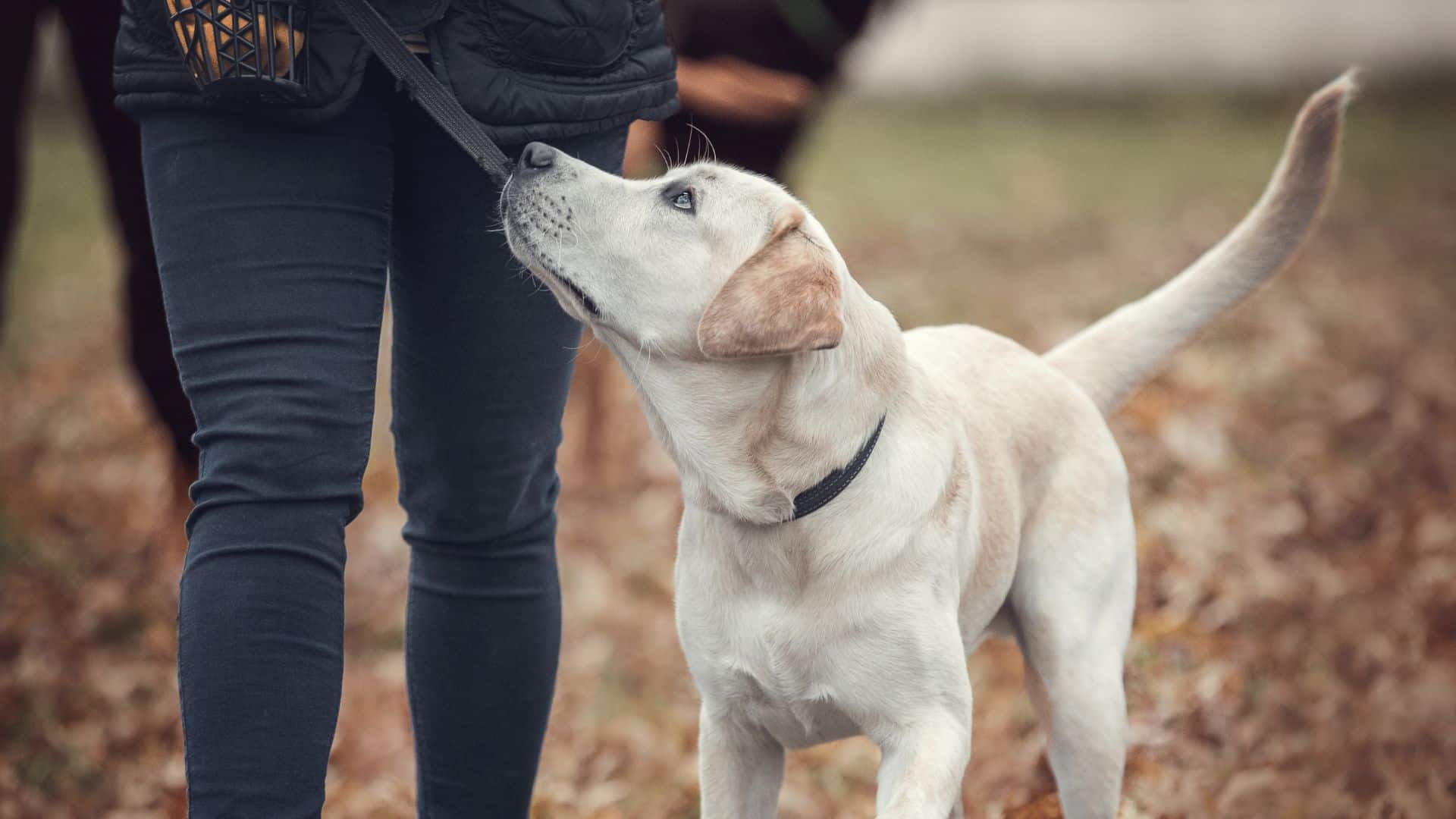Do you need to know how to choose a dog training school? Selecting a dog trainer can be a daunting task, but there are a few key factors to consider. It’s important to research the trainer’s qualifications and experience in dog training. Additionally, you should inquire about their training methods and ensure they align with your own values and goals for your dog’s training.
The first session is one of the hardest because it sets the foundation for the entire training process. It is important to observe how the trainer interacts with your dog and assess their teaching methods.
Today, there are many dog training schools, which make it hard to choose one. The catch is not finding one but rather finding the right one. In this article, we will equip you with a few tips that will help you find the right dog training class for your canine companion.
10 Things To Look For When Choosing A Dog Training School

Look for a dog trainer who offers guarantees on their training methods and results. This shows their confidence in their ability to effectively train your dog. Additionally, consider a dog training school that offers a variety of training programs to cater to the different needs and learning styles of dogs.
Force-free training classes are also important to look for, as they prioritize positive reinforcement and avoid any form of physical or psychological harm to the dog.
Furthermore, it is beneficial to choose a dog training school that provides ongoing support and resources even after the completion of the training program, ensuring continued success in maintaining your dog’s training. Dog training is an unregulated industry, so it is crucial to do thorough research and choose a reputable and certified dog training school.
#1. Know what you want the dog to learn
Before anything else, you need first to identify what it is that you intend your dog to learn. Some schools have a wide array of dog pieces of training, which allows you to choose from the extensive portfolio.
For example, if you intend your dog to help you deal with anxiety or post-traumatic stress disorder, you could look up for a service dog school near you on the internet and choose a dog that meets your requirements accordingly.
#2. Gather referrals and read reviews
Word of mouth is very compelling as it can make you choose something or totally ignore it. After identifying what you need your dog to be trained on, you can go ahead and ask your friends for some references.
Get at least two or three referrals then go ahead and log into their websites to find out what other people are saying about the services they received. Choose a reputable school that aligns with your dog needs.
#3. Check for licensing
Like any other business, dog training schools need to have a valid license to prove their legitimacy. Ensure that you confirm that the school holds a valid license before you take your dog for training.
You do not want to take your puppy one morning only to come back in the evening to find out that the trainers ran away with your puppy.
#4. Go for professional services
There are many dog training schools in the market today, but what differentiates them is their expertise. Dog pieces of training differ, so depending on the type of dog training you choose, go for someone who has enough experience on the job. Get a dog trainer who has enough skills as well as certifications to do the job. Remember, you need to get value for your money.
#5. Budget
How much do you intend to spend on the dog training? You have to come up with a budget of the amount you will allocate to the dog training class. Choose one that is within your budget and offers quality services.
However, do not base your decision entirely on the price of the course. Instead consider factors such as duration of the training, training methodology, and the type of training before making a decision.
#6 Go over the dog training classes
A dog training class needs to be structured and well-organized to effectively teach dogs new skills and behaviors. It should include a combination of theory and practical exercises, allowing owners to understand the principles behind training techniques and apply them in real-life situations.
Additionally, a professional trainer will have the complete training process of their training sessions already planned out, ensuring that each class builds upon the previous one and progresses at a suitable pace for both the dogs and their owners.
Find professional dog trainers that offer continuing education and stay up-to-date with the latest training techniques and research. This ongoing education allows trainers to continually refine their skills and provide the most effective methods for their clients.
#7 Talk to the dog trainers about their experienced trainer
Qualified dog trainers offer a wealth of knowledge and expertise in handling various breeds and behavioral issues. They can provide personalized training plans tailored to your dog’s specific needs, ensuring effective and positive results.
Furthermore, good dog trainers have the ability to effectively communicate with both dogs and their owners, creating a strong bond and understanding between them. They use positive techniques to encourage desired behaviors and address any problem areas.
Talking to his or her previous clients can give you an idea of the trainer’s success rate and how satisfied their clients are with their services. Additionally, a good dog trainer will also provide ongoing support and guidance to help you maintain the training progress and address any new challenges that may arise.
#8 Find the right dog trainer based on your needs
A good dog trainer that can meet your needs will consist of a combination of experience, expertise, and positive methods. Look for a trainer who has worked with dogs similar to yours and has a track record of success in addressing the specific behavioral issues you are facing.
Moreover, your dog deserves a trainer who will prioritize their well-being and use humane techniques. It is important to find a trainer who understands and respects your dog’s individual personality and needs, as this will greatly contribute to their overall progress and happiness.
The most important thing is to find a trainer that offers a personalized approach to training, tailoring their methods to suit your dog’s unique needs and learning style. This will ensure that your dog receives the most effective and efficient training possible, leading to long-lasting results.
#9 Look for certified trainers that use positive reinforcement
A private training session that utilizes positive reinforcement can be highly effective in helping you achieve your fitness goals. This technique not only motivates you to push harder during your workouts but also creates a positive and enjoyable experience.
Great trainers will remove unwanted behaviors from reactive dogs and help them develop new, desirable behaviors through positive techniques. These trainers will work with you and your dog to create a safe and supportive environment, allowing for effective behavior modification and overall improvement in your dog’s behavior.
Adult dogs can still develop new skills and behaviors that contribute to their overall well-being and happiness. A skilled dog trainer can tailor their approach to meet the specific needs of older dogs, taking into consideration any physical limitations or health conditions they may have.
#10 Use professional dog trainers that have a positive training philosophy
Look for trainers who have certifications from recognized organizations such as the Certification Council for Professional Dog Trainers (CCPDT) or the International Association of Animal Behavior Consultants (IAABC). These certifications ensure that the trainers have undergone proper education and adhere to ethical standards in their techniques.
Positive trainers can teach dogs how to behave appropriately through reward-based methods, reinforcing good behavior with treats, praise, or play. They focus on building a strong bond between the dog and the owner, promoting trust and cooperation.
Find professional organizations that use positive methods to train your dog by searching online directories or asking for recommendations from veterinarians or other dog owners. It is important to choose a trainer who has experience working with your specific breed or behavior issue, as different dogs may require different approaches.
Group classes can also be a good option for your dog, as long as they are conducted in a positive and supportive environment. In group classes, dogs have the opportunity to socialize with other dogs and learn from their behavior. Additionally, group classes provide a structured setting where dogs can practice obedience skills in various real-life scenarios.
Understanding The Science Based Training Methods For Dogs

As dog owners, we are in charge of getting the right dog trainer for our pets. It is important to understand the techniques used by trainers to ensure the well-being and effectiveness of our dogs’ training.
By using these scientifically proven methods, trainers can effectively communicate with dogs and teach them desired behaviors while building a strong bond based on trust and mutual respect.
Dog behavior can be modified, even in adult dogs, by using reward-based methods. With consistency and patience, dog owners can see significant improvements in their dog’s behavior and overall well-being.
Basic obedience training
Dogs learn obedience commands through consistency. These commands include “sit,” “stay,” “come,” and “heel.” By teaching these commands, dog owners can establish clear communication with their pets and ensure their safety in various situations.
Over the past few decades, dog training online classes have been gaining popularity as a convenient and effective way to teach these obedience commands. These classes offer step-by-step instructions and demonstrations, allowing dog owners to learn and practice the commands at their own pace.
Reward based training
A good trainer will use reward-based training with their canine students to encourage positive behavior and strengthen the bond between the trainer and dog. Other dogs that have behavioural problems will need a good teacher to help them learn new behaviors and overcome their challenges.
Leash corrections
A well-behaved dog is one that understands and follows commands without the need for physical correction. Leash corrections, on the other hand, involve using a leash to correct unwanted behaviors such as pulling or lunging.
Pay attention if the dog trainer asks you to use leash corrections during classes. This technique can be effective in teaching your dog to walk calmly on a leash and respond to your commands. However, it is important to use these type of corrections properly and with caution, as excessive force or misuse can cause harm or distress to your dog.
Potty training
Private lessons with the right trainer that can teach you appropriate behavior techniques can be highly effective with dogs. They will provide personalized attention and guidance, ensuring that your dog learns the correct behaviors and understands when and where to go potty.
Additionally, a skilled trainer can address any specific challenges or issues that may arise during the entire process, making it a smoother and more successful experience for both you and your dog. Your dog’s problem has a solution, and as a dog owner, it is your responsibility to seek out the necessary guidance and support to help your dog overcome it.
Last Updated on 16/03/2025 by Karen Snow
Hi! I’m Karen and a certified dog lover. As a freelance writer and blogger, I do my best to squeeze in some time with my dogs, learning more about the way they act and how I can make sure that they continue to stay well-cared for by yours truly.
My dogs have helped me through a lot, and this is my way of giving back to them! Besides animals, I also love to travel and cook, having explored my country’s restaurants and unique places. Follow me as I show you all the amazing tips and bits of information I learn along the way about our furry friends!
